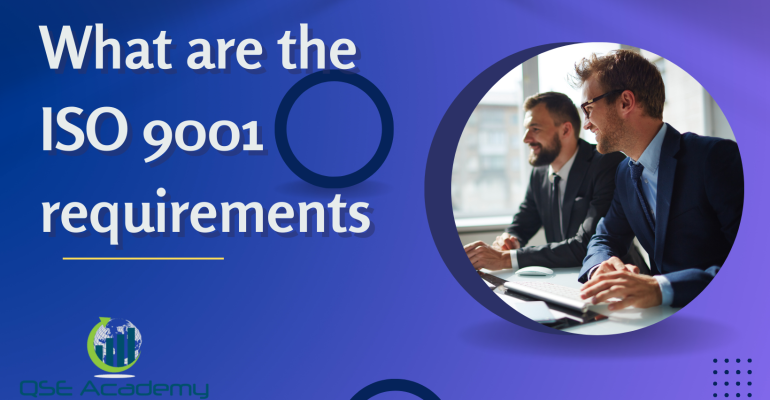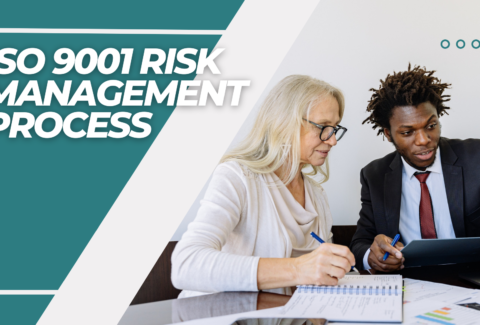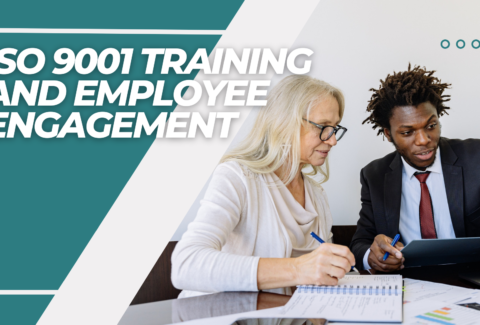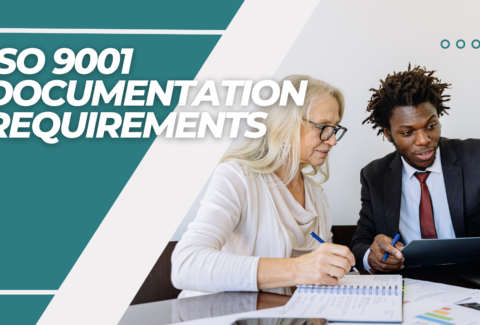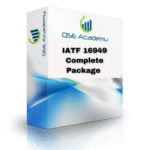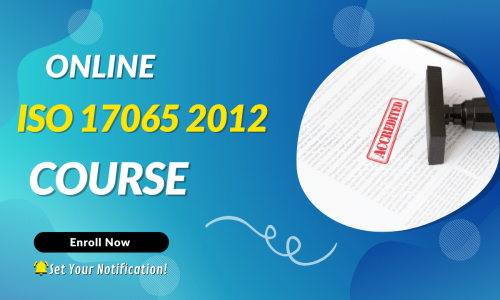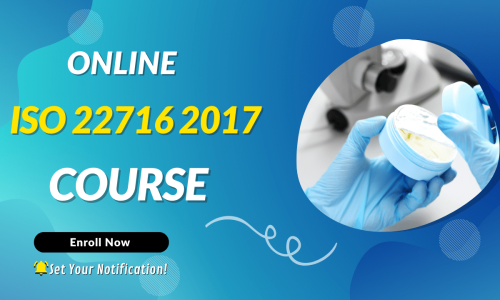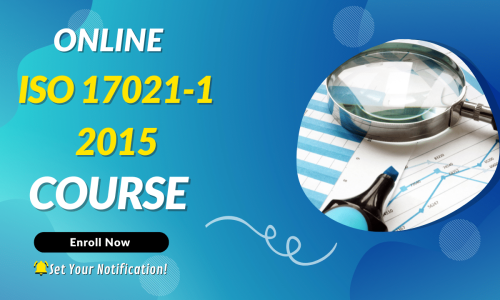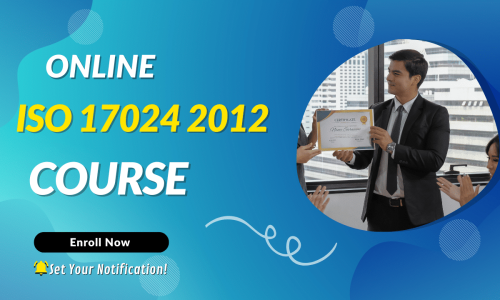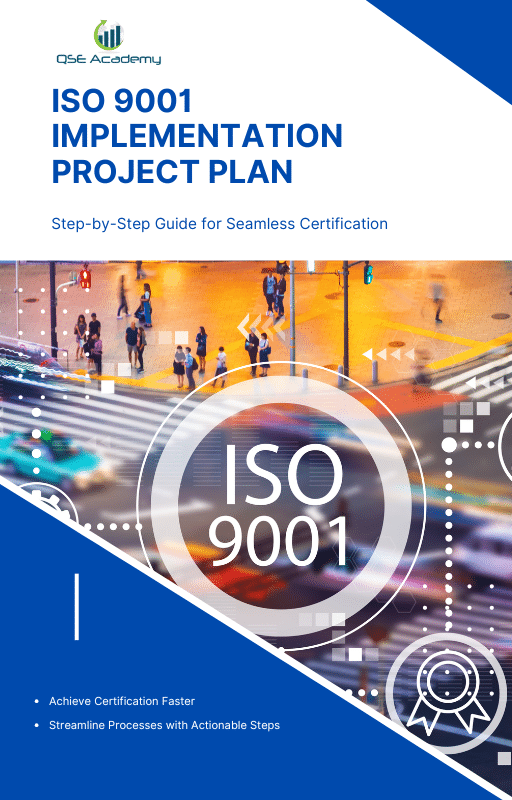What are the ISO 9001 requirements?
What are the ISO 9001 requirements?
If you’ve ever wondered what are the ISO 9001 requirements and why they matter, you’re not alone. For many businesses, ISO 9001 might sound like a technical buzzword or just another certification to check off a list. But the truth is, the requirements behind this international standard are all about helping organizations run smoothly, deliver quality, and keep customers happy.
Think of ISO 9001 as a roadmap for building a better, more efficient business. The requirements are like the key milestones on that map—steps that guide you toward consistent processes, reliable products or services, and a culture of continual improvement. And here’s the best part: ISO 9001 doesn’t just apply to big corporations. Whether you’re a small business or a global enterprise, the requirements are flexible enough to suit your unique needs.
In this article, we’re diving into exactly what are the ISO 9001 requirements. We’ll break them down into simple, manageable concepts that anyone can understand, even if you’re not an expert. By the end, you’ll have a clear picture of what these requirements involve and how they can set your business up for success. Ready to dig in? Let’s get started!
An Overview of ISO 9001 and Its Purpose
Before we dive into the details of what are the ISO 9001 requirements, let’s take a moment to understand what ISO 9001 is all about. At its core, ISO 9001 is an internationally recognized standard for quality management systems (QMS). Sounds a bit technical, right? Don’t worry—I’ll explain it in a way that makes sense.
Think of ISO 9001 as a framework designed to help businesses consistently deliver quality. It’s like a set of best practices that organizations can follow to make sure their processes are efficient, their products or services meet customer expectations, and they’re always looking for ways to improve. It’s not about forcing you into a one-size-fits-all approach but instead offering flexible guidelines you can adapt to your unique business needs.
Now, why does this matter? Because the ISO 9001 requirements provide the foundation for building trust with your customers. When a company meets these requirements, it’s essentially saying, “We care about quality, and we’ve got the systems in place to back it up.” And who doesn’t want to work with a business like that?
What’s really great about the ISO 9001 standard is that it’s applicable to all kinds of organizations—big, small, and everything in between. Whether you’re running a tech startup, a manufacturing plant, or even a nonprofit, you can use the requirements to enhance your operations and deliver better results.
In short, understanding what are the ISO 9001 requirements is your first step toward achieving a solid quality management system. These requirements aren’t just a checklist—they’re a powerful tool for creating a more reliable, efficient, and customer-focused organization. And in the sections ahead, we’ll break them down so you can see exactly how they work and why they’re worth it. Let’s keep going!
Why Understanding ISO 9001 Requirements Matters
So, why should you care about what are the ISO 9001 requirements? It’s a fair question, especially if you’re new to the world of quality management. But here’s the thing: these requirements aren’t just for ticking boxes or earning a certificate to hang on your office wall. They’re about creating real, tangible benefits for your business—and that’s something every organization can appreciate.
At their core, the ISO 9001 requirements are designed to help you run a better, more organized business. Imagine knowing exactly where your processes might have inefficiencies or gaps, and then having a clear plan to fix them. That’s the beauty of these requirements—they give you a framework to identify risks, improve operations, and deliver a more consistent experience for your customers.
And let’s talk about customers for a second, because they’re a big part of why the ISO 9001 requirements are so important. Meeting these standards shows your customers that you’re serious about quality. It’s like saying, “Hey, we’ve got our act together, and you can trust us to deliver what we promise.” Whether you’re selling a product or offering a service, that kind of trust can set you apart from the competition.
Another reason understanding what are the ISO 9001 requirements matters is that they encourage continuous improvement. Let’s face it—no business is perfect. But the ISO 9001 standard pushes you to keep looking for ways to get better, whether that’s streamlining processes, reducing errors, or even improving how you communicate with your team. Over time, this mindset can create a ripple effect that transforms your entire organization.
So, if you’re wondering why these requirements are worth your time, think about the bigger picture. It’s not just about meeting standards—it’s about building a business that’s efficient, reliable, and trusted by everyone it serves. And that’s a goal we can all get behind! Ready to see what these requirements actually look like? Let’s explore them in the next section.
The Core Requirements of ISO 9001: A Breakdown
Now that we’ve talked about why they matter, let’s dive into what are the ISO 9001 requirements and break them down into bite-sized pieces. Don’t worry—I’ll keep things simple and straightforward so it doesn’t feel overwhelming.
The ISO 9001 standard is organized into seven key sections, or “clauses,” that outline what a quality management system (QMS) should include. Think of these as building blocks for creating a reliable, customer-focused business. Let’s go through each one step by step:
1. Context of the Organization
This is the foundation of it all. To meet the ISO 9001 requirements, your business needs to understand its own unique context. What does that mean? It’s about identifying the internal and external factors that could impact your ability to deliver quality. For example, are there economic conditions or industry trends you need to consider? What do your customers expect from you? Once you know the answers to these questions, you can build a QMS that addresses the challenges and opportunities specific to your organization.
2. Leadership
Strong leadership is a must when it comes to ISO 9001. One of the key requirements is that top management needs to be actively involved in driving quality. This includes setting clear goals, assigning responsibilities, and creating a culture where quality isn’t just a buzzword but a real priority. Essentially, leaders need to walk the talk and inspire the rest of the team to embrace the standard.
3. Planning
Here’s where you put on your strategic thinking hat. The planning clause focuses on identifying risks and opportunities that could impact your quality management system. It’s like asking, “What could go wrong, and how can we prevent it?” But it’s not just about avoiding problems—it’s also about setting specific, measurable quality objectives that help your organization move forward.
4. Support
Support might sound like a vague term, but it’s actually one of the most practical sections of the ISO 9001 requirements. This is all about making sure your team has what they need to succeed. Do you have the right resources, from trained staff to equipment and infrastructure? Are you documenting important processes and communicating clearly? The support requirements ensure you’ve got all the tools in place to run a smooth operation.
5. Operation
When it comes to what are the ISO 9001 requirements, the operation clause is where the action happens. This section focuses on planning, controlling, and delivering your products or services. It’s about ensuring consistency and meeting customer requirements every time. Think of it as your playbook for getting things done right, from start to finish.
6. Performance Evaluation
How do you know your QMS is actually working? That’s where performance evaluation comes in. The ISO 9001 standard requires you to monitor, measure, and analyze your processes to see how well they’re performing. This includes internal audits and management reviews to make sure you’re staying on track and meeting your goals.
7. Improvement
Finally, we have improvement—and honestly, this might be the most exciting part of what are the ISO 9001 requirements. Improvement is all about never settling for “good enough.” Instead, it encourages you to find ways to do things better, whether that’s fixing problems, streamlining processes, or innovating to stay ahead of the competition. It’s about embracing change and using it to your advantage.
By breaking down these seven core sections, you can see that the ISO 9001 requirements aren’t just a set of rules—they’re a roadmap for running a better business. Each one builds on the other, creating a system that helps you deliver consistent quality, meet customer expectations, and continuously improve over time.
Ready to put this into action? Let’s talk about how to meet these requirements in the most practical way possible!
Practical Tips for Meeting ISO 9001 Requirements
Now that we’ve explored what are the ISO 9001 requirements, you might be wondering, “How do I actually meet them?” Don’t worry—it’s not as daunting as it sounds. With the right approach and a little preparation, your business can tackle these requirements step by step. Here are some practical tips to help you get started.
1. Start with a Gap Analysis
Before jumping into changes, take a moment to assess where your organization currently stands. A gap analysis helps you compare your existing processes to the ISO 9001 requirements. It’s like a checklist that shows what you’re already doing well and what needs improvement. This way, you’re not starting from scratch—you’re building on the strengths you already have.
2. Get Your Team Involved
Meeting ISO 9001 requirements isn’t a one-person job. It’s a team effort! Engage your employees early on and explain why these requirements matter. When your team understands the benefits—like smoother operations, fewer errors, and happier customers—they’re more likely to get on board. Plus, involving them can lead to valuable insights about how your processes really work on a day-to-day basis.
3. Keep Things Organized with Documentation
One of the most common questions about what are the ISO 9001 requirements is, “Do I need a ton of paperwork?” The answer is no—ISO 9001 isn’t about creating unnecessary documents. However, you do need to document key processes, policies, and objectives. Think of this as a way to stay organized and ensure everyone is on the same page. Tools like templates or software can make this much easier.
4. Focus on Risk Management
One of the core principles of ISO 9001 is risk-based thinking. This means identifying potential issues before they become problems. For example, if you’re in manufacturing, what could go wrong in your production line, and how can you prevent it? By addressing risks early, you’ll save time, money, and headaches down the road.
5. Invest in Training and Resources
The ISO 9001 requirements emphasize having competent, well-trained employees who can do their jobs effectively. If your team needs additional training to meet these standards, consider it an investment in your company’s success. Similarly, make sure you have the right resources—whether it’s updated equipment, better tools, or more efficient technology.
6. Don’t Be Afraid to Ask for Help
If the ISO 9001 requirements still feel overwhelming, you don’t have to figure it all out on your own. Hiring a consultant or working with an ISO 9001 expert can give you the guidance you need to navigate the process. They’ve seen it all before and can offer advice tailored to your specific industry or challenges.
7. Take It One Step at a Time
Finally, remember that meeting what are the ISO 9001 requirements doesn’t have to happen overnight. Break the process into manageable steps and focus on one area at a time. Celebrate small wins along the way, like completing a gap analysis or improving a single process. Progress is progress, no matter how small.
By following these practical tips, you’ll be well on your way to meeting the ISO 9001 requirements and reaping the benefits they bring. Whether it’s building customer trust, improving efficiency, or staying ahead of the competition, these requirements are a powerful tool to help your business grow. And as you’ll see in the next section, staying compliant isn’t just about getting certified—it’s about creating a culture of quality that lasts. Let’s keep going!
How to Stay Compliant with ISO 9001 Requirements
So, you’ve worked hard to meet what are the ISO 9001 requirements, and now you’re ISO 9001 certified—congratulations! But here’s the thing: the journey doesn’t stop there. Staying compliant with ISO 9001 is just as important as getting certified in the first place. The good news? Maintaining compliance is totally manageable with the right approach. Let’s talk about how you can keep your quality management system (QMS) running smoothly and aligned with ISO 9001 requirements.
1. Embrace Regular Internal Audits
Think of internal audits as your QMS check-up. Just like you go to the doctor for a health check, your processes need to be reviewed to make sure everything is still working as it should. ISO 9001 requires organizations to conduct regular internal audits to evaluate their QMS. This helps you identify any areas that need improvement before they become bigger issues. Plus, it’s a great way to stay prepared for external audits!
2. Keep Your Documentation Updated
Remember all those documents you created when implementing what are the ISO 9001 requirements? Well, they’re not a “set it and forget it” deal. As your business evolves, your processes might change too—and your documentation should reflect that. Make it a habit to review and update your policies, procedures, and records regularly to ensure they’re accurate and relevant.
3. Stay on Top of Training
Your team plays a huge role in maintaining compliance with ISO 9001. That’s why it’s essential to keep everyone up to date with training. Whether it’s onboarding new employees or providing refreshers for your existing staff, regular training ensures that everyone understands their role in meeting the ISO 9001 requirements. And remember, a well-informed team is a confident team!
4. Use Feedback to Your Advantage
One of the most important aspects of ISO 9001 is listening to feedback—whether it’s from customers, employees, or even suppliers. Feedback is like a mirror, showing you where you’re doing well and where there’s room for improvement. By actively collecting and acting on feedback, you’re not just staying compliant—you’re continuously improving your QMS, which is a big part of what are the ISO 9001 requirements.
5. Conduct Management Reviews
Management reviews are a key part of staying compliant with ISO 9001. These meetings give your leadership team a chance to evaluate the performance of your QMS, discuss any issues, and plan for improvements. It’s like hitting the pause button to ask, “What’s working, what’s not, and what can we do better?” Regular management reviews help keep your QMS aligned with your business goals and the ISO 9001 requirements.
6. Adapt to Changes
Businesses don’t stay the same forever—things change! Whether it’s new technology, shifting customer expectations, or industry trends, your QMS should adapt to keep up. Part of staying compliant with ISO 9001 is being flexible and proactive about making updates when needed. This ensures that your processes remain effective and relevant, no matter what comes your way.
7. Commit to Continual Improvement
If there’s one thing the ISO 9001 requirements emphasize, it’s the idea of continual improvement. Compliance isn’t just about maintaining the status quo—it’s about always looking for ways to do better. Whether that’s improving efficiency, enhancing customer satisfaction, or finding innovative solutions to challenges, the goal is to keep moving forward.
By following these steps, you can ensure your business stays compliant with ISO 9001 and continues to thrive. Meeting what are the ISO 9001 requirements isn’t just a one-time achievement—it’s a commitment to quality, improvement, and excellence. And the best part? It’s a journey that helps your organization grow stronger and more resilient with every step. Let’s wrap things up in the conclusion!
The Big Picture: Why ISO 9001 Requirements Are Worth It
By now, we’ve explored what are the ISO 9001 requirements in detail, but let’s take a step back and look at the bigger picture. Why are these requirements worth the effort? After all, implementing a quality management system takes time, energy, and commitment. So, what’s the real payoff? Let’s talk about why meeting ISO 9001 requirements can make a world of difference for your organization.
1. They Build Trust with Your Customers
In today’s competitive world, trust is everything. Customers want to know they can rely on your business to deliver consistent quality, whether you’re offering a product or a service. By meeting what are the ISO 9001 requirements, you’re sending a clear message: your business is serious about quality and customer satisfaction. That kind of credibility doesn’t just win customers—it keeps them coming back.
2. They Improve Efficiency
One of the great things about the ISO 9001 requirements is how they help you streamline your processes. Imagine having a system in place where everyone knows their role, errors are minimized, and everything runs like clockwork. That’s what a good quality management system can do for you. It’s not just about meeting requirements—it’s about creating a smoother, more efficient operation that saves you time and resources.
3. They Foster a Culture of Improvement
The ISO 9001 standard isn’t just about maintaining the status quo. It’s about constantly looking for ways to do things better. When you focus on what are the ISO 9001 requirements, you’re committing to a culture of continual improvement. Over time, this mindset can transform your organization, driving innovation and helping you stay ahead of the competition.
4. They Prepare You for Future Challenges
No one can predict the future, but having a strong quality management system gives your business the flexibility to adapt to change. Whether it’s evolving customer expectations, new regulations, or unexpected challenges, the ISO 9001 requirements ensure you’re ready to respond. It’s like having a safety net that keeps your business resilient, no matter what comes your way.
5. They Benefit Your Entire Organization
While the ISO 9001 requirements are often thought of as customer-focused, their benefits go far beyond that. They create a positive ripple effect throughout your organization. Employees work more effectively, communication improves, and teams are more aligned. It’s not just about external success—it’s about building a stronger, happier, and more efficient workplace.
At the end of the day, what are the ISO 9001 requirements all about? They’re about creating a framework that helps your organization succeed. Whether it’s building trust, improving processes, or driving innovation, these requirements are a tool for growth and excellence. And the best part? They’re adaptable, meaning any business—big or small—can use them to achieve their goals.
Meeting the ISO 9001 requirements might seem like a challenge at first, but the rewards are absolutely worth it. In the next section, we’ll tie everything together and look at how you can take the first step toward making these requirements work for your business. Let’s wrap it up!
Conclusion: Why Understanding What Are the ISO 9001 Requirements Matters
So, there you have it—a complete breakdown of what are the ISO 9001 requirements and why they’re such a game-changer for businesses. Whether you’re running a small startup or a global corporation, these requirements provide a roadmap to help you work smarter, deliver consistent quality, and build trust with your customers.
At its core, the ISO 9001 standard isn’t about overwhelming you with rules or unnecessary paperwork. It’s about helping you create a quality management system that works for you—one that’s tailored to your business’s unique needs and goals. The requirements are there to guide you, making sure your processes are efficient, your team is aligned, and your customers are happy.
The best part? Meeting what are the ISO 9001 requirements doesn’t just help you achieve certification—it helps your business grow and thrive. From improving operational efficiency to fostering a culture of continual improvement, the benefits go far beyond the certificate itself. It’s about building a foundation for long-term success, one step at a time.
If you’re feeling inspired to take the next step, remember that you don’t have to do it all at once. Start small—conduct a gap analysis, get your team involved, and focus on one area at a time. Before you know it, you’ll be well on your way to creating a business that not only meets the ISO 9001 requirements but also stands out as a leader in quality and customer satisfaction.
So, why not take that first step today? Understanding what are the ISO 9001 requirements is the key to unlocking a more efficient, trusted, and successful organization. And that’s something every business can benefit from!
Looking for More Resources on ISO 9001?
Looking for ISO 9001 Resources Tailored to Your Industry?
If this article helped clarify ISO 9001, take the next step with our industry-focused tools designed to simplify your certification journey:
📦 ISO 9001 Documentation Kits by Industry: Whether you’re in manufacturing, construction, consulting, or healthcare — we have complete, ready-to-use documentation tailored for your sector.
🎓 Online ISO 9001 Training: Learn how to implement ISO 9001 effectively with our easy-to-follow video lessons, real-world examples, and practical exercises.
📋 ISO 9001 Checklist: Download our step-by-step checklist to ensure your QMS meets all the 9001:2015 requirements from start to finish.
These resources are crafted to save you time, reduce stress, and help you achieve certification with confidence. Choose your industry and start now!

make ISO standards less intimidating and more approachable for everyone.
Whether it’s ISO 9001, ISO 22000, or the cosmetics-focused ISO 22716,
I’ve spent my career turning complex jargon into clear, actionable steps
that businesses can actually use. I’m not here to call myself an expert—I prefer “enthusiast” because I truly love what I do.
There’s something incredibly rewarding about helping people navigate food safety and quality management systems
in a way that feels simple, practical, and even enjoyable.
When I’m not writing about standards, you’ll probably find me playing Piano 🎹, connecting with people, or diving into my next big project💫.
- I’m an engineer specialized in the food and agricultural industry
- I have a Master’s in QHSE management and over 12 years of experience as a Quality Manager
- I’ve helped more than 15 companies implement ISO 9001, ISO 22000, ISO 22716, GMP, and other standards
- My clients include food producers, cosmetics manufacturers, laboratories, and service companies
- I believe quality systems should be simple, useful, and efficient
- Outside of work, I play piano and love learning something new every day
Let’s make ISO less about stress and more about success! 🙏

